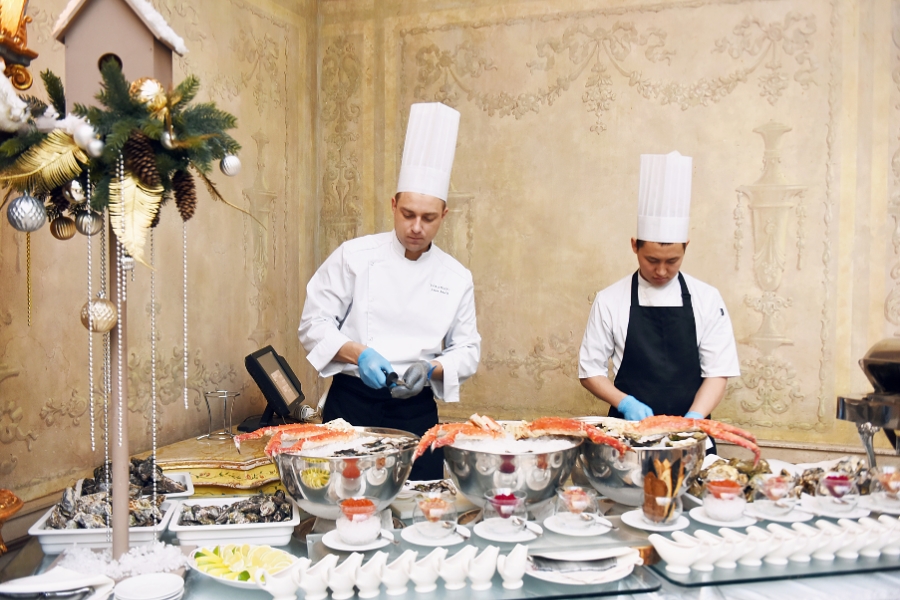
The success of an event often hinges on the quality and execution of the catering. Great food and impeccable service can elevate any occasion, while mishaps in the catering process can overshadow even the best-planned event. Avoiding common catering pitfalls isn’t just about dodging disaster—it’s about crafting a dining experience that delights your guests and runs like clockwork. Here’s an expanded guide to the most common pitfalls and how to avoid them with finesse.
1. Underestimating Food Quantities
Running out of food is a caterer’s nightmare and a guest’s disappointment. It’s one of the fastest ways to tarnish the reputation of an otherwise well-executed event. Hungry guests aren’t happy guests.
How to Avoid It: Always plan for more than your expected guest count. A good rule of thumb is to add 10–15% to your final headcount to accommodate unexpected arrivals or guests with larger appetites. Work closely with your caterer to calculate portion sizes based on the type of meal and the event’s duration. For cocktail-style events, plan on 8–12 bite-sized pieces per person. For buffets, ensure there’s enough variety to allow guests to return for seconds.
2. Overlooking Dietary Restrictions
With the rise of diverse dietary needs and preferences, catering menus that ignore restrictions risk alienating guests. From gluten intolerance to vegan lifestyles, dietary accommodations are no longer optional—they’re expected.
How to Avoid It: Proactively gather information about dietary requirements during the RSVP process. Provide your caterer with a detailed list of restrictions, from allergens to specific preferences. Ensure your menu includes at least one gluten-free, vegetarian, and vegan option that doesn’t feel like an afterthought. Highlight these items on the menu to make it easy for guests to identify them without awkward inquiries.
3. Poor Communication with the Caterer
Miscommunication with your catering team can result in everything from mismatched expectations to menu mishaps. It’s essential to keep lines of communication open and detailed.
How to Avoid It: Set clear expectations early on. Share a detailed overview of your event, including the number of guests, event style, menu preferences, and schedule. Be specific about presentation, serving styles, and any special requirements. Regular check-ins ensure that everyone is aligned, and nothing is left to chance. Don’t assume—confirm.
4. Failing to Plan for Timing
Timing is everything in catering. Late food service or delays in clearing dishes can throw off the rhythm of the event, leaving guests frustrated or disengaged.
How to Avoid It: Develop a detailed timeline for the event and share it with your catering team. Include key milestones such as setup, appetizer service, main course, and dessert. Build in buffer times for potential delays, and assign someone to monitor and adjust the schedule as needed. Remember, it’s better to have food ready early than to keep guests waiting.
5. Skipping a Venue Walkthrough
Assuming the venue is ready to accommodate your catering needs can lead to unpleasant surprises, such as limited kitchen facilities or insufficient space for service stations.
How to Avoid It: Schedule a walkthrough of the venue with your caterer well in advance. Identify logistical challenges like narrow doorways, limited storage, or lack of refrigeration. Discuss the placement of serving stations, bar setups, and dining areas to ensure a smooth flow. A walkthrough helps your caterer prepare for the specific conditions of the venue, avoiding last-minute adjustments.
6. Ignoring the Importance of Presentation
No matter how delicious the food is, poor presentation can detract from the dining experience. A sloppy buffet or uninspired plating leaves a lasting (and negative) impression.
How to Avoid It: Discuss the visual aspects of the food with your caterer. Whether it’s a sophisticated plated dinner or a vibrant buffet, ensure that presentation matches the event’s tone. Ask about creative serving ideas, like edible garnish accents, themed plating, or tiered displays that add visual interest. Attention to detail elevates the food from sustenance to an experience.
7. Forgetting About Beverage Pairings
A great meal deserves great drinks, yet beverages are often treated as an afterthought. Inadequate drink options or poor pairings can diminish the impact of even the best menu.
How to Avoid It: Collaborate with your caterer or a beverage specialist to curate a drink menu that complements the food. Think beyond basics—offer signature cocktails, mocktails, or local craft beers that tie into the event theme. Don’t overlook hydration: ensure water, sparkling options, and non-alcoholic drinks are readily available. For formal events, pair wines with courses for an elevated experience.
8. Underestimating Staffing Needs
Insufficient staffing can lead to chaos, with long lines, delayed food service, and overwhelmed servers tarnishing the guest experience.
How to Avoid It: Discuss staffing levels with your caterer based on the guest count, service style, and event complexity. As a guideline, formal dinners typically require one server per 10–12 guests, while buffets may need fewer. If you’re unsure, opt for slightly more staff to ensure smooth and attentive service.
9. Overcomplicating the Menu
Ambitious menus may look impressive on paper but can be difficult to execute, especially in large-scale events. Complex dishes increase prep time, risk errors, and may not resonate with all guests.
How to Avoid It: Simplify the menu without sacrificing creativity. Focus on a few standout dishes that are flavorful, visually appealing, and feasible within the event’s constraints. Offer variety without overwhelming guests—three to four entrée options are usually sufficient. Balance familiar crowd-pleasers with unique offerings to satisfy a range of tastes.
10. Neglecting to Confirm Final Details
The smallest overlooked detail can snowball into a major issue. Forgetting to confirm guest counts, menu items, or setup instructions can lead to unnecessary stress on the event day.
How to Avoid It: Schedule a final check-in with your caterer at least a week before the event. Review the menu, confirm guest counts, discuss any last-minute dietary requests, and finalize the timeline. This last review ensures everyone is on the same page and prepared to deliver a flawless experience.
Catering Done Right: A Recipe for Success
Avoiding these common catering mistakes isn’t just about logistics—it’s about creating an unforgettable event where food and service leave guests raving. By planning meticulously, communicating clearly, and working collaboratively with your caterer, you can transform potential pitfalls into seamless successes. Great catering is more than a meal; it’s an experience that brings people together and elevates any occasion.
